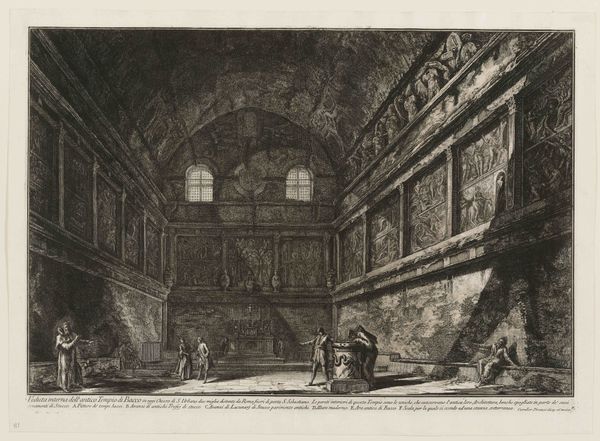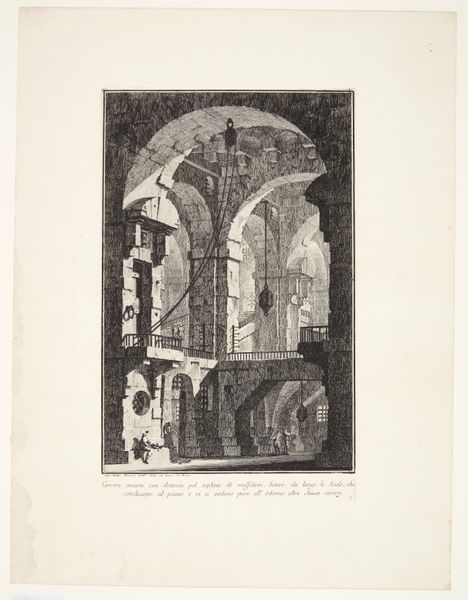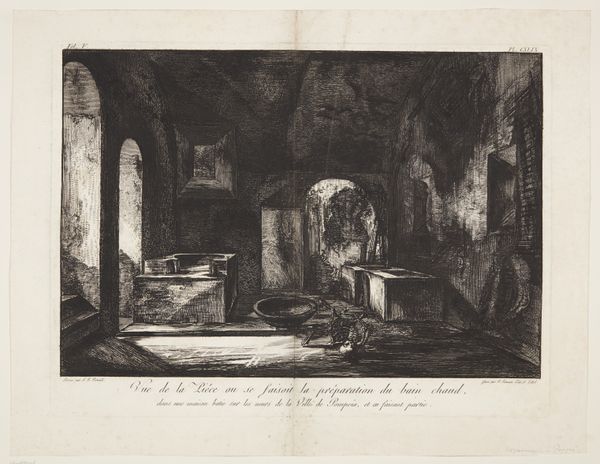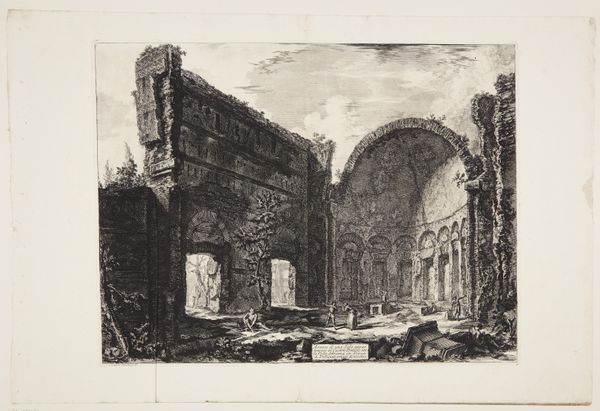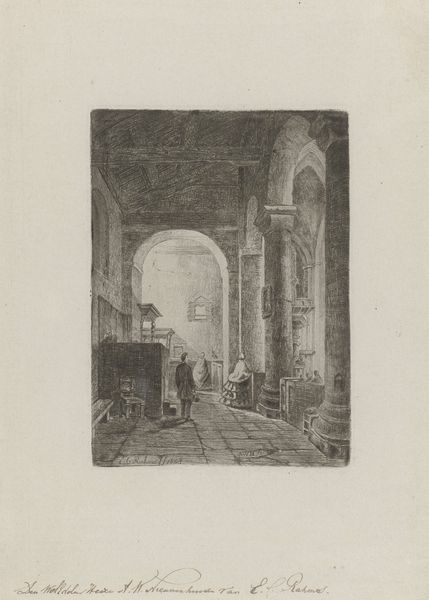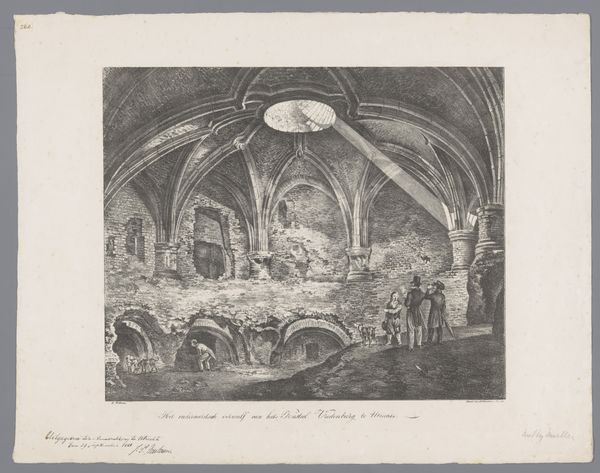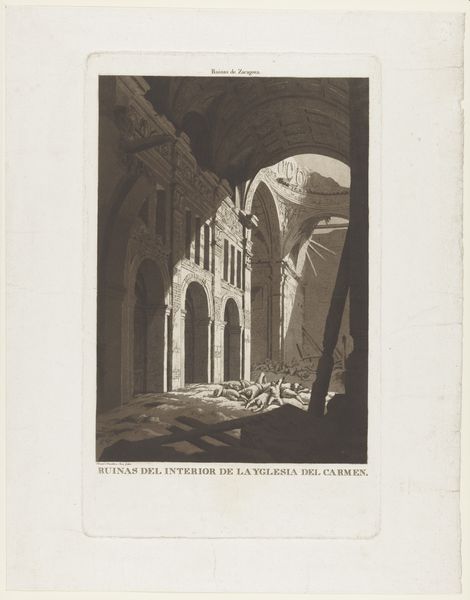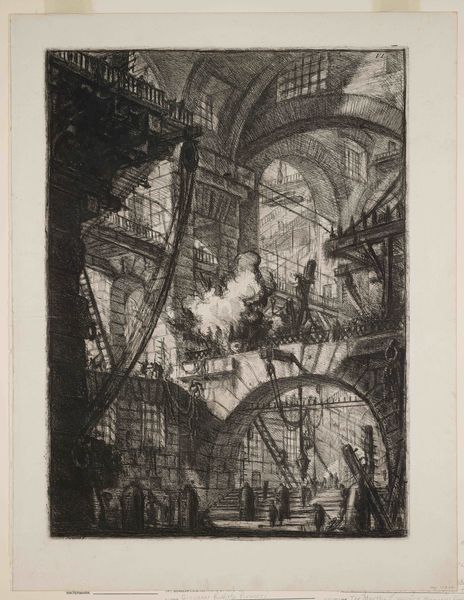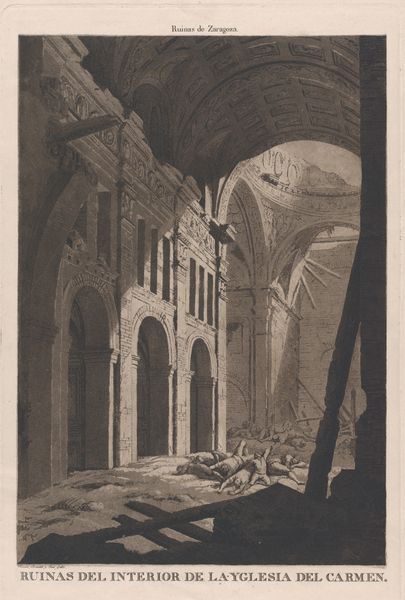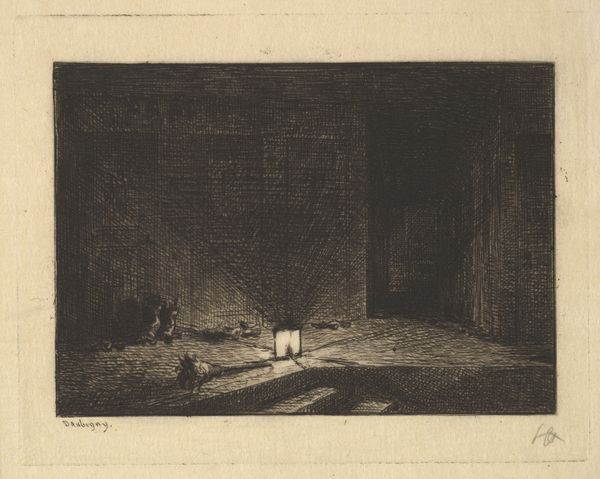
print, engraving, architecture
#
neoclacissism
# print
#
landscape
#
line
#
engraving
#
architecture
#
realism
Dimensions: height 267 mm, width 340 mm
Copyright: Rijks Museum: Open Domain
Friedrich Wilhelm Gmelin made this print, "View of the drainage channel of the lake near Albano," using etching, a printmaking technique. The method involves drawing a design with a needle onto a metal plate covered with wax, and then immersing the plate in acid. The acid bites into the metal where the wax has been removed, creating lines. These lines are then filled with ink, and the image is transferred to paper under high pressure. Notice how Gmelin's etching captures the texture and weight of the ancient stonework. The print conveys the immense labor involved in constructing such a massive structure. The regular, repeating shapes of the stones contrast with the organic forms of the tree, highlighting the tension between nature and human intervention. The figures in the print seem to be laboring, reminding us of the social context of such monumental projects. By focusing on the materials, the making, and the social context, Gmelin's etching challenges traditional distinctions between fine art and craft, inviting us to consider the value and meaning embedded in the processes of creation.
Comments
No comments
Be the first to comment and join the conversation on the ultimate creative platform.
